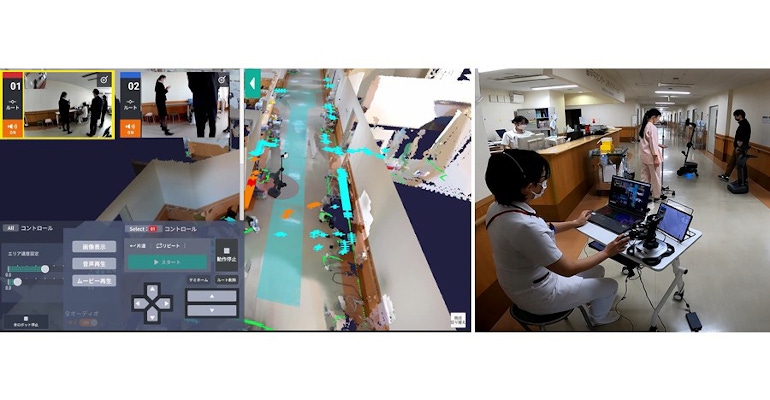Nursing-Support Robots Tested in Japan
TransBots can direct multiple robots to assist nursing and healthcare professionals by moving autonomously within hospitals and by guiding patients.
March 2, 2022

Tokyo-based Toppan is piloting use of its TransBots digital twin solution for supporting nursing services. TransBots is a digital twin solution employing virtual reality (VR) and computer vision (CV) technologies for remote, central management and control of multiple types of service robots, Toppan explained in a news release.
The pilot was part of a project by Kanagawa Prefecture to test robots in supporting roles to combat the COVID-19 pandemic. Testing was conducted on January 25, 2022, at Shonan Kamakura General Hospital in Kamakura, Kanagawa. The team set out to identify any technical challenges in terms of safety and operability to be addressed so that nursing support robots could one day be used in medical facilities to reduce human workload. TransBots was put to work in directing multiple robots to move autonomously within hospitals and to handle reception and patient guidance for wards and testing rooms. Findings of the test will be shared at the “Hospital × Robot × COVID-19 Prevention with Kanagawa” booth (East Hall 7) at the International Robot Exhibition 2022 (iREX2022), to be held by the Japan Robot Association March 9-12 at the Tokyo Big Sight exhibition center.
“Even before the COVID-19 pandemic, Japan was looking at ways to reduce the workload for nursing and care services, including the use of robots,” stated Tomoichiro Shibue, deputy head of Toppan’s Business Innovation Center, in a the release. “TransBots can facilitate the use and control of robots for diverse services in healthcare settings and the results of this pilot test will enable us to refine the solution towards practical implementation.”
Operators using the TransBots management dashboard set courses in a VR space for robots to follow while their real-life counterparts estimate their current locations and move autonomously to avoid obstacles along their way. Being able to set courses in a VR space means that robots can also be controlled remotely from distant locations, Toppan explained last year.
Support services that could be provided by the robots were devised based on feedback from nurses and other healthcare professionals as well as through on-site observation, Toppan reported. Risks that could be caused by robots in hospitals were analyzed and technical issues identified. Verification of service design was overseen by Satoru Tokuhisa, Associate Professor of Kyushu University’s School of Interdisciplinary Science and Innovation.
About the Author(s)
You May Also Like


